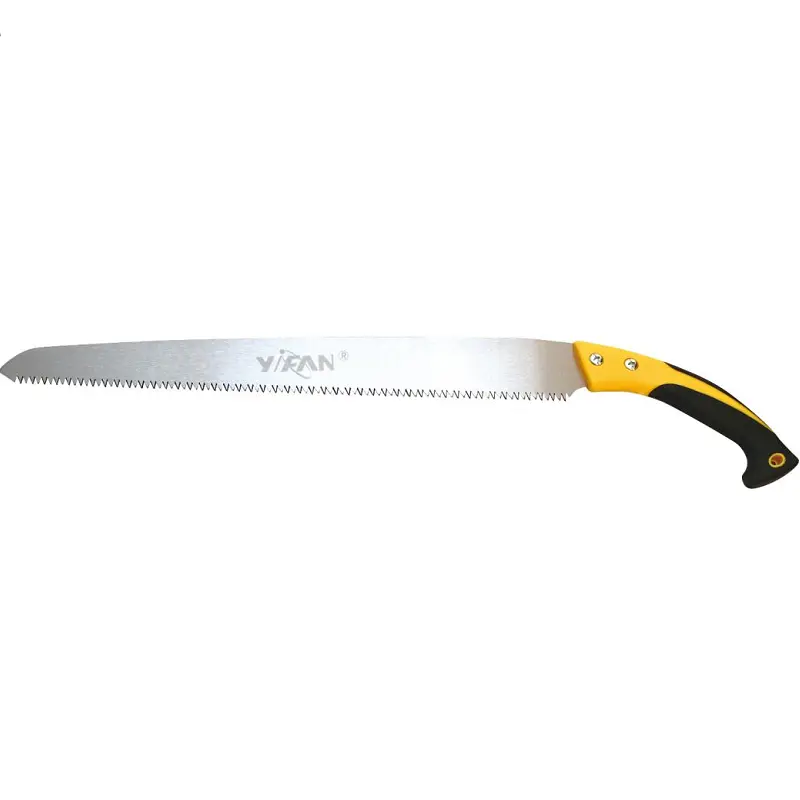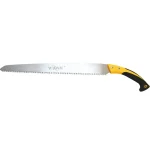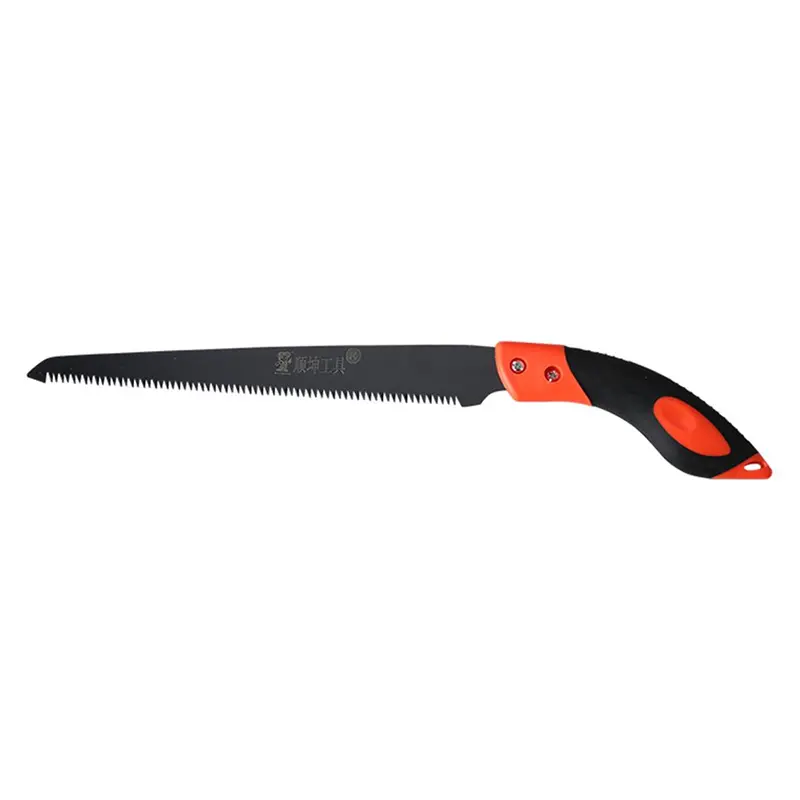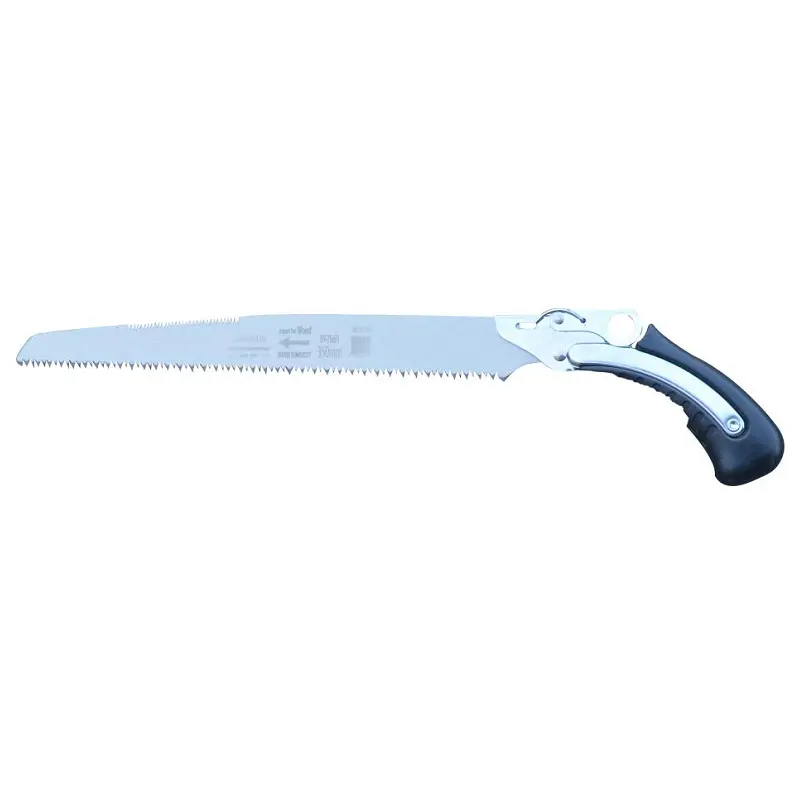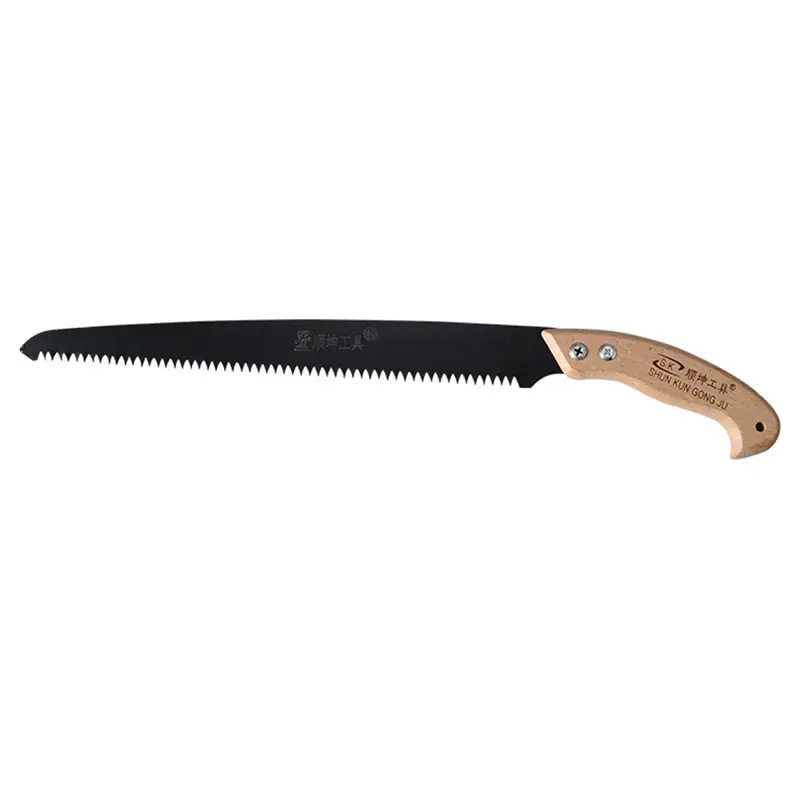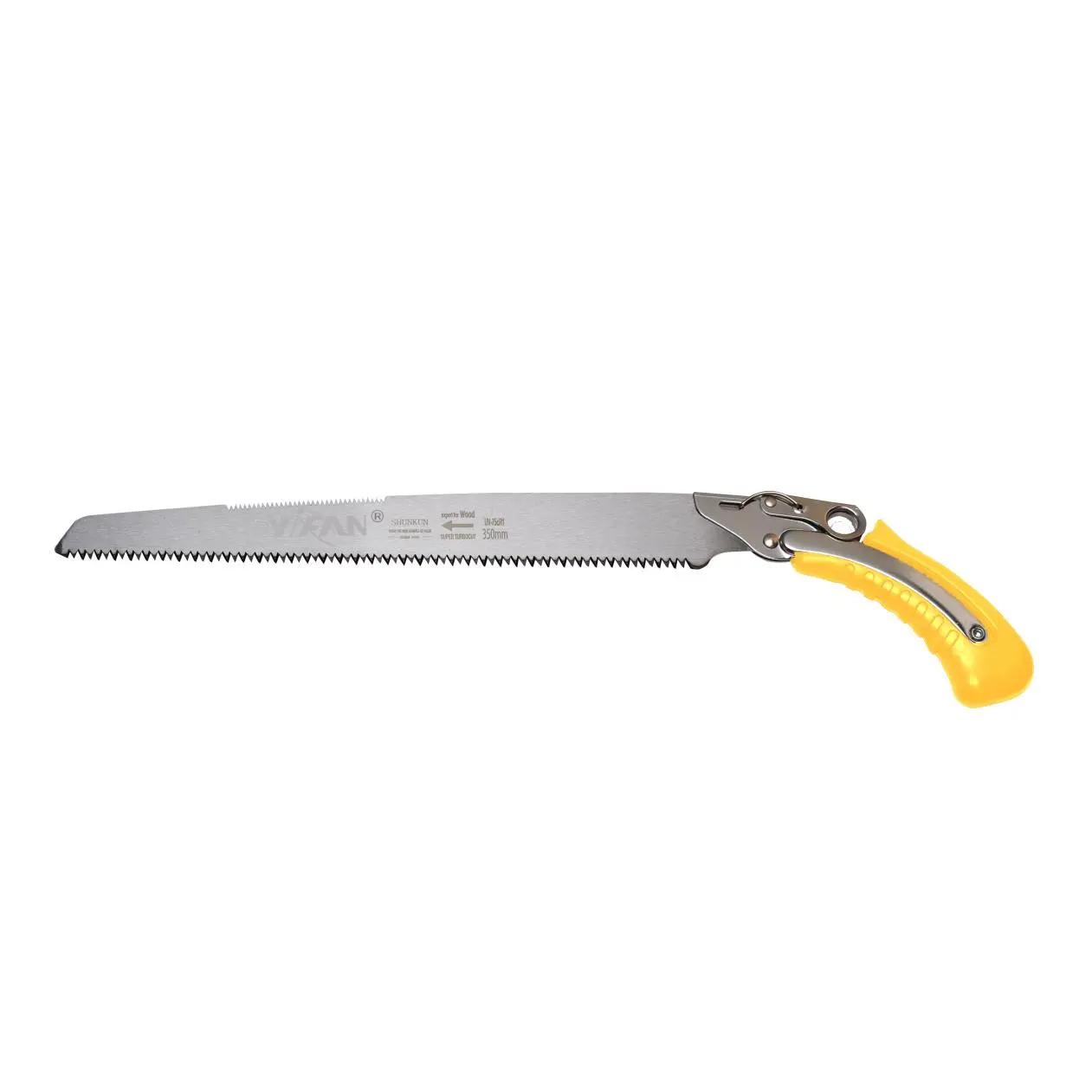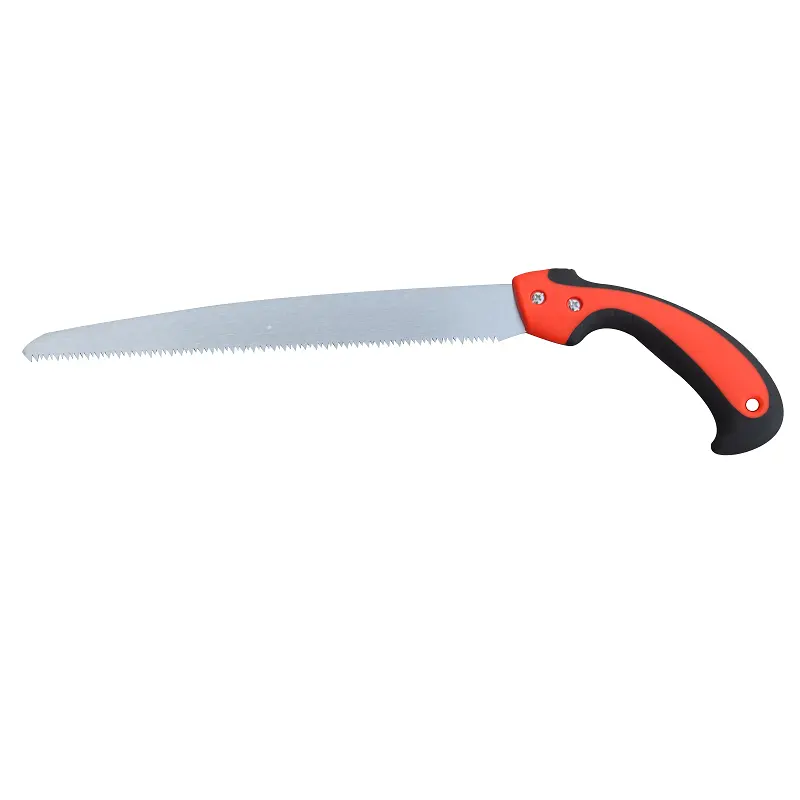Black and yellow handle fruit tree saw
一、Production description:
Fruit tree saws can quickly and accurately prune the branches of fruit trees, improving pruning efficiency. Compared with traditional manual pruning tools such as scissors and pruning shears, fruit tree saws can cut thicker branches more easily, saving time and physical effort.
二、use:
1:Observe the fruit trees and determine the locations of branches that need to be pruned. Remove diseased branches, weak branches, crossed branches, overlapping branches, etc. to improve the ventilation and light conditions of the fruit trees and promote fruit growth.
2:Place the saw blade gently on the branch and start sawing from the bottom of the branch to prevent the branch from falling and injuring you when you cut it.
3:Pull the saw blade back and forth steadily, and do not use too much force to avoid the saw blade from getting stuck or breaking. During the sawing process, pay attention to controlling the direction of the saw to ensure that the saw cut is flat.
三、Performance has advantages:
1、Fruit tree saws are usually made of high-quality steel, such as 65Mn steel, SK5 steel, etc. After a special heat treatment process, the saw blade has high hardness and good wear resistance.
2、The shape, size and material of the handle are designed to be comfortable for the user to hold, so the user will not feel overly tired even after long hours of operation.
3、The overall weight of the fruit tree saw is designed to be moderate, neither too heavy to cause inconvenience in operation nor too light to lack stability, making it easy for users to operate it flexibly.
四、Process characteristics
(1)High-quality steels such as 65Mn steel and SK5 steel are often used. These steels have the characteristics of high hardness and good wear resistance. They can withstand the greater friction and impact when sawing branches, ensuring the service life of the saw blade.
(2)Through heat treatment processes such as quenching and tempering, the saw blade can obtain good hardness and toughness.
(3)The teeth are usually triangular or trapezoidal and have a certain inclination angle.
(4)The common ones are equidistant arrangement and staggered arrangement. When sawing, the kerf of equidistantly arranged saw teeth is narrower, which is suitable for occasions with higher requirements for saw kerf width; staggered arrangement of saw teeth can reduce vibration during sawing, making the sawing process more stable.
(5)The handle is an important component of the fruit tree saw, and its design directly affects the user's operating experience and work efficiency.
